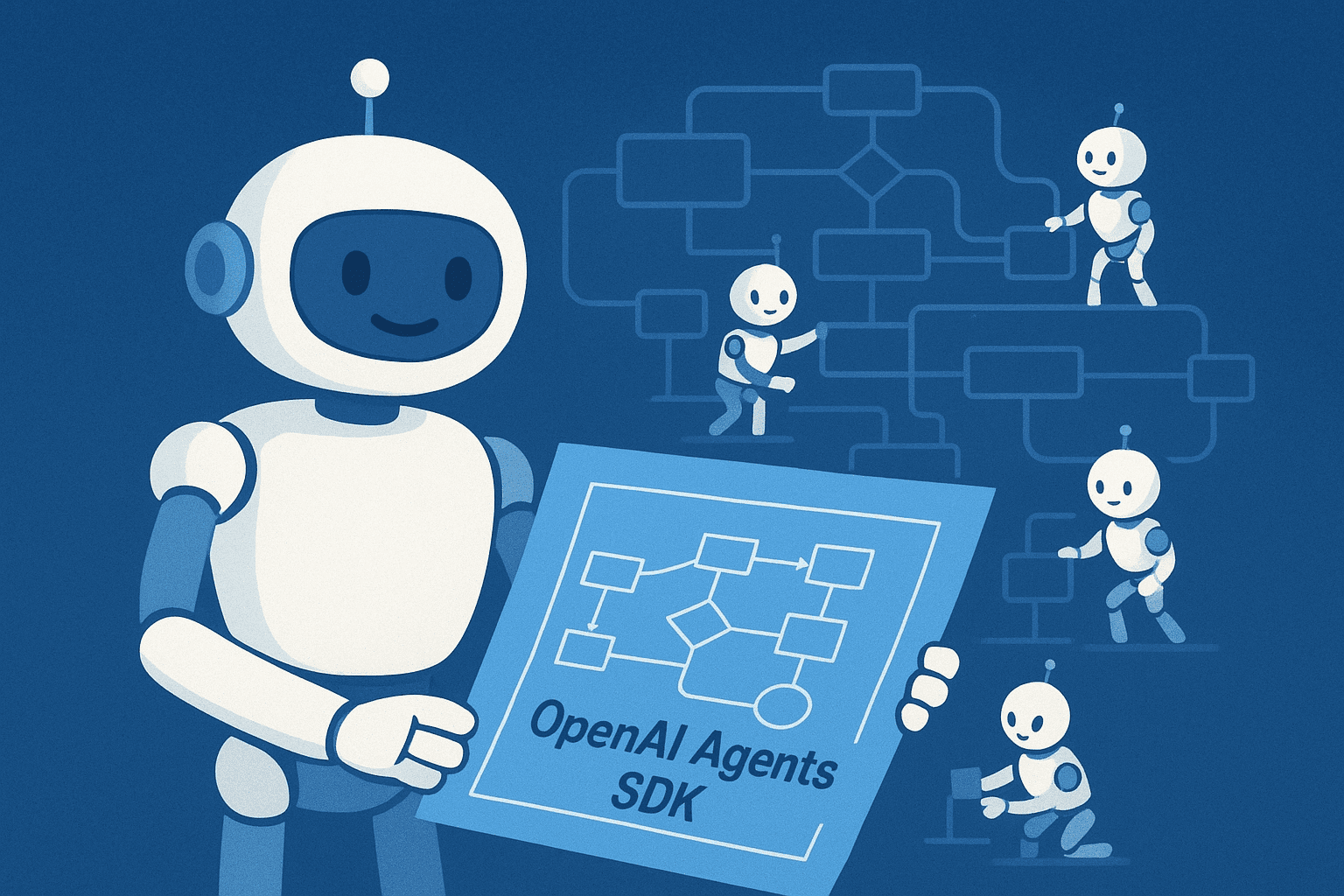As I mentioned in my introductory post, I love the feeling of starting a new
Vercel/Next.js app – the potential feels limitless. But it's the combination of tools working together that truly brings ideas to life. So, here's a breakdown of my go-to toolkit for building modern, AI-driven web applications in 2025.Foundation: Next.js & Vercel
For the core of my web applications, Next.js is my framework of choice, deployed almost exclusively on Vercel. Why?
• Developer Experience (DX): Next.js offers an incredible development experience out of the box. Features like file-based routing, fast refresh, and built-in optimizations make development smooth and efficient.
• Hybrid Rendering: The flexibility to choose between Server-Side Rendering (SSR), Static Site Generation (SSG), or Incremental Static Regeneration (ISR) on a per-page basis is invaluable. This allows for optimizing performance and SEO where needed, while still enabling dynamic, personalized content crucial for many AI apps.
• API Routes/Serverless Functions: Seamlessly integrating backend logic directly within the Next.js project using API routes (which deploy as serverless functions on Vercel) is perfect for handling tasks like calling external AI APIs (OpenAI, Anthropic, etc.), processing user input before sending it to an LLM, or interacting with my database.
• Vercel Synergy: Vercel is built by the creators of Next.js, and the synergy is palpable. Deployment is as simple as
git push origin main. Vercel handles scaling, provides analytics, global CDN, and makes managing environment variables straightforward. It simplifies infrastructure concerns, letting me focus on building the actual application features.For AI apps, this means I can quickly build interactive frontends and have performant serverless endpoints ready to handle AI model interactions without managing complex server infrastructure.
Backend & Data: Supabase
While Vercel handles the frontend and serverless functions, I rely heavily on Supabase for the persistent backend layer – database, authentication, and more.
• Postgres: At its core, Supabase provides a dedicated PostgreSQL database. This isn't just any SQL database; Postgres is robust, feature-rich, and increasingly capable in the AI space thanks to extensions like
pgvector (for storing and querying vector embeddings – essential for Retrieval-Augmented Generation or RAG).• Integrated Auth: Supabase Auth provides a complete solution for user management (including social logins), saving immense development time compared to rolling your own. Securely managing user data is paramount, especially when dealing with potentially sensitive inputs or outputs from AI models.
• Realtime Capabilities: Supabase's real-time features allow you to subscribe to database changes. This is fantastic for building dynamic interfaces that react instantly, like updating a UI element when an AI background job completes.
• Ease of Use: Supabase bundles common backend needs into a cohesive, easy-to-use platform with a great SDK. It significantly reduces the boilerplate needed to get a backend up and running.
Supabase serves as the central hub for storing user accounts, application data, AI prompts, generated content, and potentially the vector embeddings that power more advanced AI features.
User Interface: shadcn/ui & Radix UI
A great AI application needs an intuitive and clean user interface. My preference here leans towards
shadcn/ui.• Composable & Unstyled:
shadcn/ui isn't a traditional component library. Instead, you copy/paste code for beautifully designed components built on top of Radix UI (for headless logic and accessibility) and Tailwind CSS (for styling).• Customization: Because you own the code, customization is straightforward. You're not fighting against library opinions; you're extending standard HTML and CSS with well-structured building blocks.
• Accessibility: Built on Radix UI, accessibility is a core focus, ensuring the apps are usable by everyone.
• Radix UI Primitives: Radix provides the underlying unstyled, accessible primitive components (like dropdowns, dialogs, toggles).
shadcn/ui gives them beautiful styling, but understanding Radix allows for even deeper customization if needed.This combination allows for building polished, professional-looking UIs quickly without sacrificing control or accessibility – crucial for making complex AI interactions feel simple and intuitive to the user.
Background Jobs & Long-Running Tasks: Trigger.dev
AI tasks often don't fit neatly into the synchronous request/response cycle of a web server. Generating complex content, processing large files for analysis, or even fine-tuning models can take time. For this, I've started using Trigger.dev.
• Simplified Background Jobs: Trigger.dev makes defining, scheduling, and monitoring background jobs incredibly simple, directly within your codebase. It abstracts away the complexities of managing message queues or dedicated worker infrastructure for many common cases.
• Integrations: It integrates smoothly with platforms like Vercel and Supabase, and can easily call external APIs (like AI services).
• Use Cases: Perfect for offloading tasks like:
• Sending a large text document to an LLM for summarization.
• Kicking off an image generation process based on user input.
• Running periodic data analysis using an AI model.
• Handling webhooks from external services.
While Vercel's serverless functions have timeouts, Trigger.dev provides a robust way to handle longer-running AI processes asynchronously without blocking the user interface.
Stepping Up Complexity: AWS Lambda & AWS Services
While Vercel, Supabase, and Trigger.dev cover a vast range of use cases, sometimes you hit limitations or need more specialized tooling. That's where AWS comes in.
• AWS Lambda: For highly complex, compute-intensive, or long-running tasks that might exceed the capabilities or cost-effectiveness of the other platforms, AWS Lambda offers more granular control over the execution environment (memory, timeout limits, specific runtimes).
• Specialized AWS Services: AWS offers a rich ecosystem of services relevant to AI:
• S3: Scalable object storage for large datasets, model artifacts, or user uploads.
• Other tools for data processing, monitoring (CloudWatch), etc.
• When to Use: I typically reach for AWS when:
• I need fine-grained control over the compute environment.
• I need specific AWS AI services not easily accessible elsewhere.
• I'm building highly complex, event-driven architectures involving multiple steps.
• Cost optimization at massive scale becomes critical for a specific component.
Think of AWS as the power toolkit for when the standard tools aren't quite enough or when you need industry-specific, heavy-duty AI capabilities.
Synergy and Getting Started
The beauty of this stack is how well the pieces fit together:
• Next.js on Vercel provides the user-facing layer and serverless glue.
• Supabase offers a managed backend, saving time and effort.
• shadcn/ui makes building the interface pleasant and fast.
• Trigger.dev handles the asynchronous tasks common in AI.
• AWS provides the escape hatch for ultimate power and flexibility.
Tips for Getting Started:
1. Start Simple: Don't feel you need to use every tool for every project. A simple AI app might just need Next.js/Vercel and calls to an external AI API. Introduce Supabase when you need data persistence or auth. Use Trigger.dev when background tasks become necessary.
2. Leverage Templates: Many templates exist to kickstart projects with Next.js, Supabase, and Tailwind/shadcn/ui integrated.
3. Understand Serverless: Get comfortable with the concepts of serverless functions (API routes in Next.js). They are key for interacting with AI models securely and efficiently.
4. Focus on Prompts: The quality of your AI features often hinges more on prompt engineering than the specific infrastructure. Spend time refining how you interact with the models.
5. Iterate: Build, test, and iterate. Your first approach might not be perfect. Learn from it and refactor as needed – just like my traceability app journey!
This toolkit provides a robust, scalable, and developer-friendly foundation for building the next generation of AI-powered applications. It balances ease of use with powerful capabilities, allowing me to move quickly from idea to implementation.



